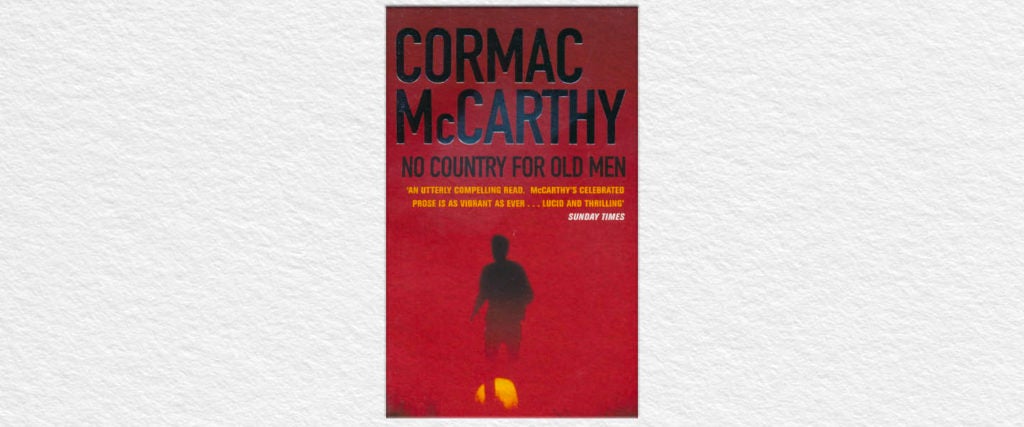Bad men enjoy books about violence, cruelty or blood. They enjoy the slow, methodical uncovering of sinew and bone, of soft tissue peeling back. They enjoy accounts of other men being sad, or cheating on beautiful women, or being sad about cheating on beautiful women. They may even empathize with these men. The books bad men enjoy are written by other bad men: Hemingway, Salinger, Nabokov and Foster Wallace, men who weren’t kind to their wives or their mistresses or their mothers.
Decrying these bad men is a popular pastime on the internet. The idea of the bad male author, and the bad men who love his works, has floated to the top of the online ecosystem like plastic in a waterway, bobbing above an undertow of shitty ex-boyfriend memes and posts about men who sleep on mattresses without bed frames and male tears mugs. Most celebrated major male authors of the 20th century are lumped together under the moniker of bad male authors, no matter how disparate in style or tone (both James Joyce and F. Scott Fitzgerald are common targets). Ernest Hemingway shouldn’t be read because he was a misogynist. There is particular ire for J.D. Salinger’s The Catcher in the Rye; “controversial opinion” tweets decrying the novel have practically become a micro-genre, and people have declared Holden Caulfield to be everything from a “whiny brat who only softbois and murderers connect with” to President Donald Trump.
Quote retweet with your most controversial literary take.
Mine ? is that Catcher In The Rye is bad, actually.
— TZE THEE CHUN (@thetzechun) July 16, 2020
At first, the pillorying of the bad male author and their attendant readers seems nothing more than a mixture of lazy generalizations and shallow readings; tired jokes that grew out of legitimate criticisms of how these authors engaged with gender, race and sexuality (and don’t get me wrong, there is definitely obvious good to come from considering which works we deify and which works are excluded). But as the meme spreads from think piece to Twitter to TikTok, there seems to be something more insidious at play.
@joekarlsson Getting strong J.D. Salinger vibes from this sound tho. #catcherintherye #jdsalinger #books #bookclub #booktok #holdencaulfield #Holden
By taking the adage that the personal is political to its most extreme conclusion, critics of these books are able to occupy a moral high ground: If you like a book that isn’t kind to its female characters then you, by extension, are a misogynist. It’s a simplification that hinges on an essentialist, deeply sexist presumption — that these books are for bad men, and that women cannot truly enjoy them. But that isn’t the case. When I tweeted about writing this article, I received a flood of responses from women — often related in the internet equivalent of a hushed tone, of a whispered confession — who told me that their favorite authors were those deemed the exclusive province of bad men.
An inevitable consequence of framing certain books in such a manner is how these stereotypes shape our image of a female reader. In these discussions, the female reader is frail and soft. She can only read books about beautiful men with soft faces and clean nails, and cannot stomach gore or cruelty or callousness. Writing to me about her love of Cormac McCarthy, Rachel says that she found that critics of him tended to focus on the idea of the violence in his books making them unsuitable for women. She finds this troubling: “The idea that violence is somehow alien to women is incredibly misogynistic and regressive. I’d imagine most women have more violent imaginations than most men (simply through having thought of violent scenarios more often as a self-defense thing).”
Rachel explains how loving McCarthy’s works has become a hallmark of a bad man due to his “macho environments,” which in turn gave rise to the idea that “he endorses those environments or is trying to promote them.” She thinks this is garbage: “It’s clear that he’s using them as a very obvious symbol for the warped promise of America.” Implicit in this idea that depiction equals endorsement is the notion that a female reader can’t differentiate between a narrator who is a misogynist and a book that’s espousing misogyny, and that she must be protected from having to make that distinction.
Besides, sometimes interpretations that give rise to the bad men moniker are just plain wrong. It’s difficult to read Lolita, for example, and still argue that Vladimir Nabokov was pro-pedophilia. There’s a pettiness to many of these conversations as well, a smug righteousness that arises from self-defined enlightenment. Often they seem less about grappling with actually expanding the canon, than with demonstrating superiority. Som-Mai, who tells me of her love for Albert Camus and Salinger, puts it best, “I feel that many people are obsessed with hashing out why their high school teacher was wrong, or why they didn’t deserve that one C, or why they were a gifted child, actually, but different because they could see through the ‘classics’ grift.”
Much of the conversation around bad men hinges on constructing an imagined reader — as white, male and privileged as the author — that absorbs and re-enacts the sins of the book’s characters. This demonstrates a conservative and oddly utilitarian demand for didacticism in novels, but it’s also deeply patronizing to the people who aren’t male or white, but who also enjoy reading these books. Over email, Rochelle (who tells me she carried “a flame” for Philip Roth, but also enjoys all of the men usually cast as bad male authors) identifies the condescension implicit in this belief, writing, “The stereotype is that these authors are self-involved and insular, interested in a specific point-of-view and no others, and therefore, the audience must be the same. But that’s ridiculous.”
There’s an exclusionary logic behind the archetype of the Roth reader, one that assumes a default of whiteness and maleness. As Rochelle argues, the belief “goes to show that people of color aren’t afforded the luxury to be shallow even in our reading tastes. We have to be revolutionist and abolitionist, and every book we read or write has to be a portrait of injustice or a call to arms — about a people, not a person, and certainly not an average or immoral one.”
Anita, who professes her love for Jack Kerouac, agrees: “His books are travelogues; I don’t expect them to be a treatise on gender.” Not to mention, it can be exhausting to have to hold authors to a strict morality test before you can enjoy their works. As Sophie, who loves “several” bad male authors, says, “I just want to enjoy their work without listening to Twitter critiques. Just like you want to eat an ice cream without reading the nutritional label.”
“People who do and say shit things can and do create work that leaves an impression on us,” Huda adds. “Our acknowledgement of the impression a work leaves on us isn’t an endorsement of the writer’s character.”
Within the conception of the bad man book, there’s always a shrinking, a reduction of experience to one drawn solely from gender identity. It operates on an assumption that women can only relate to a work on the basis of their femaleness, rather than find a commonality in the other issues interrogated. I often think of the TikTok in which Didion is proposed as a superior alternative to Roth. It relies on the notion that we can better relate to Joan Didion, our Lady of the Upper East Side, with her 50 yards of yellow silk curtains and her Céline sunglasses, than we can to the second-generation immigrant child of Russian Jews.
“Phillip Roth is JOAN DIDION for people not secure in their masculinity to read Joan Didion” is maybe the most accursed sentence of pure stupidity I’ve heard in a while pic.twitter.com/3qYi4S4hNu
— Iva Dixit (@ivadixit) October 6, 2020
In an email, Lily strikes at the absurdity of this generalization, telling me that her love of Roth was crucial to exploring her own identity. She says that, despite being painted as a “misogynist lech,” Roth changed “my personal understanding of my own Jewishness. It isn’t an exaggeration for me to say that without Portnoy’s Complaint and Goodbye, Columbus, I would have an entirely different, less complicated and less complete understanding of my own identity. Roth’s work is a mirror I need to look in.”
The idea that female readers are somehow unable to enjoy books like Portnoy’s or A Farewell to Arms also belies a strange assumption that the only way to gain meaning from a text is its proximity to the reader. It’s undeniable that for too long literature portrayed an incredibly narrow segment of human experience (and still does), but to shrink fiction to a simple dynamic of relatable versus unrelatable seems to offer a misrepresentation of why people engage with novels, and of what they gain from interacting with them.
Sophie captures it succinctly when she talks of reading Don DeLillo’s Underworld for the first time: “I understood the world better at the end of it.” The same goes for Huda and her love of Jonathan Franzen’s The Corrections, which allowed her to gain both insight into her own life and asked her to consider viewpoints she hadn’t fully considered before, prompting her to explore “my relationship with my family/parents, and inter-generational tension more broadly. It really opened up my eyes to how older people get left behind as times change.”
To reject a book based on a surface level notion of relatability with the background of its author (or of its characters) negates the possibility of these unexpected connections. Writing to me about her love of Hemingway, Mikaella says that it’s “weird to me that he’s seen as this big heterosexual writer. I’ve written before about how queer his writing can be, and he’s got a very intensely homoerotic gaze. As a lesbian reader, his homophobia and misogyny don’t bother me very much because they seem layered with other, more interesting aspects of the work, and in fact, I’d argue that it’s not just a matter of looking past his sexism, but instead grappling with it.”
Similarly, Lily has a different view of Roth’s apparent sexism than the one usually given voice in these debates — while she knows others have a problem with how he writes women, she has a different reading. “It’s just horny, though certainly I’m not going to fight with any reader who doesn’t appreciate the way Roth’s male characters express their horniness,” she tells me. “I see him, on the sex front, as a necessary precursor to Broad City, Sarah Silverman et al, and not as an enemy of women.”
Pretty much all of the women who talked to me about their love of the bad men canon had gone through a stage of performatively disliking the authors they now adored. For most, this antipathy ended purely because they found that reading the author in question enriched, and sometimes even transformed, their life. Some felt that they could ignore the treatment of gender, sexuality or race in the books they loved. Some gained insight from exploring it. Some didn’t see any problem with it. And some found that they had their limits.
In any event, it was incredibly clear that the desire to label some books as by bad men, for bad men, is a rejection of the messy, necessary work of interrogating how and why literature affects us — and an exclusion of the very people you’re claiming to protect.

